Who captains the captains?
What can senior crew learn from the leadership training acquired from a career in the British Royal Navy?
Captains taking to the helm of a yacht is the realisation of a lifetime’s ambition and a worthy reward for a career forged in master-ing the technicalities of operations on board. However, this journey often becomes marred when captains discover that they have also become the CEO and CFO of a multi-million-euro company, a mentor and a leader to an entire crew and for some, even a parental figure or therapist. It’s a lot to take on, and life at the top can be lonely.
Over the past year, there’s been significant discussion about poor mental health, high turnover, low retention rates and increased bullying and harassment in the crew sector of the industry. While addressing mental health issues is crucial, the industry is merely papering over the cracks instead of tackling a root cause: poor leadership.
This isn’t to say there aren’t any good leaders in the yachting, there are. But as the industry continues to expand, we too need to offer our current and future leaders the same opportunity to grow in a landscape that provides them with sustained development opportunities.
To understand more about the current situation and how it can be addressed, we spoke with former Royal Navy Officers Chris Andreason, head of yacht management at Edmiston, and Tracey Santrian and Karl Santrian, founders of leadership development company BZ Maritime Leadership.
“What we need to do is bring in the ethos that leadership is a professional skill the same way as sailing a yacht is. The current career trajectory doesn’t adequately prepare captains for the multifaceted responsibilities they face.”
“If you look at a yacht captain’s career path, there’s a structured progression that often starts with hands-on experience in various roles on board. They learn the essential skills of, watchkeeping, and navigation and then they obtain certifications like the Master’s license. But the focus tends to be on completing courses and climbing the next rung on the ladder rather than developing real leadership and management abilities,” explains Chris, who also served as a superyacht captain for over 25 years after leaving the Royal Navy where he spent a decade.
“This approach completely overlooks the crucial aspects of management. Yes, you might master the technical aspects, but many captains lack comprehensive leadership training, which is essential for effectively commanding a vessel. To be clear, this isn’t to say that the industry must bring in the exact same processes as the Royal Navy. That wouldn’t work. But what we need to do is bring in the ethos that leadership is a professional skill the same way as sailing a yacht is. The current career trajectory doesn’t adequately prepare captains for the multifaceted responsibilities they face.”
“There is evidently a disparity between training priorities and the actual demands of a captain’s role,” says Karl, who previously was the head of leadership training for the Royal Navy. “Currently, the majority of training within yachting is focused on developing technical capabilities, whereas being successful in command relies on possessing superior human capabilities – interpersonal skills, leadership, management and teamwork. One reason for this mismatch might be that human capabilities are more difficult to acquire, as they need to be cultivated over time rather than taught on a stand-alone course.”
“An owner of a large company wouldn’t appoint someone as CEO without the right qualifications and skill set. So why do they make exceptions on their yacht, where they entrust their most prized possessions – their family?” adds Tracey, who served for 35 years as a crew development and well-being specialist.
This isn’t to place blame on our leaders at the helm of the fleet. Captains are grown in a technical domain to do a job that is predominantly faced in the human domain and, as highlighted above, the current training landscape tends to lack the critical human aspect required for the job. Flag states and maritime authorities focus heavily on examining professional competency in technical aspects such as navigation and stability, but they don’t adequately assess leadership and command abilities.
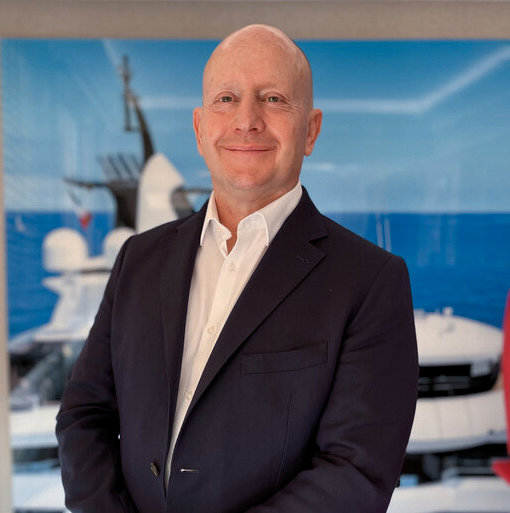
Chris Andreason, head of yacht management at Edmiston
Some shipping companies and cruise lines do evaluate these skills, but in the yachting industry there’s no review of someone’s level of human capability. The current career structure encourages individuals to focus on passing technical exams, which can suddenly lead to becoming in command of a yacht without any form of leadership evaluation.
It is not suggested that the yachting industry should introduce leadership exams, but it is imperative that those in command have received professional human-capability training. It is a fact that poor leadership often causes issues for the entire vessel and is the root cause of poor crew mental health and low retention rates, among other issues. Therefore, by refining our senior manage-ment strategies, we can foster better emotional well-being and mental health on board and, in turn, create a better and psychologically safe working environment.
For example, as captain, you don’t create the passage plan yourself; the second officer does. However, captains assess the plan based on their experience and know what to look for. Although they are trained in technical aspects to achieve their rank, once you’re a captain, others handle these tasks. The new role is to review other people’s work and oversee the crew.
If the second officer makes an error in the passage plan or anyone makes an error on board, the captain’s response is crucial. Coaching and mentoring the officer or crewmember, rather than yelling at them, can make the difference between a negative experience and a positive, developmental one. Correcting mistakes calmly and constructively ensures the individual learns and improves, enhancing safety. If handled poorly, the individual might either repeat the error or hide it, jeopardising safety. By highlighting issues in a supportive manner, the captain creates a learning environment, preventing future mistakes.
This is something BZ Maritime Leadership tries to tackle through its focus on human capabilities within its education programmes – upskilling our leaders in critical areas such as interpersonal, leadership, management, teamwork and the ability to effectively lead a yacht as a captain. Developing these capabilities is essential in creating high-performing teams on board. Given the industry’s image, the significant investment in yachts and its association with Monaco, high-calibre leaders are as crucial for yachts as top drivers and mechanics are for Formula One cars.
“Many owners aren’t made aware of the need for crew to undergo leadership training, assuming that technical expertise is enough. However, on a high-value asset as a yacht with a sizable crew, technical skills alone don’t translate to effective management.”
“In the F1 circuit, pit crews execute tyre changes with precision, operating within split-second time-frames. Similarly, the yachting industry requires a level of professionalism, teamwork and leadership akin to this,” says Karl. “And the best F1 pit crews aren’t just fast; they excel in adapting to unexpected challenges. This adaptability is equally essential in the superyacht world. Yachts operate year-round, requiring seamless teamwork and leadership, especially with crew rotations. When emergencies arise or there are sudden changes in plans, crews must swiftly respond and manage the situation effectively.”
The yachting industry has often masked its deficiencies in leadership, teamwork and human capability skills with cold hard cash. Crewmembers are frequently overworked, even with controlling measures in place to avoid this, and sometimes mistreated, leading to high turnover rates and con-stant recruitment. Owners seem willing to absorb the substantial costs associated with high crew turnover, which can exceed €20,000 per rotation. However, better leadership and on board culture could mitigate this turnover and save money. But should there be a greater responsibility for management companies or vessel owners to ensure that the crew they hire have the necessary leadership qualities to create a safe and thriving professional environment?
The challenge is convincing owners to invest in training beyond the mandatory requirements. Training in leadership and management is a crucial aspect that often get overlooked in the yachting industry. While crewmembers may receive initial training and certifications, true competency and effective leadership develop over time, through practical experience and ongoing learning. Many owners question the need for extra investment, assuming that their crew are already adequately trained. However, just like in the Royal Navy, and other professional industries, where there is continuous professional development on board the ship, yachting crew need ongoing development to handle emergencies and operate effectively as a team.
“The current problem lies in the assumption by owners that simply purchasing a boat ensures it will be manned by properly trained and qualified individuals. But what defines ‘Properly trained and qualified’?” asks Chris. “Unfortunately, many owners aren’t made aware of the need for crew to undergo leadership training, assuming that technical expertise is enough. However, on a high value asset as a yacht with a sizable crew, technical skills alone don’t translate to effective management.”
Financial constraints and timing further complicate matters. It’s currenlty difficult to make time
for training, especially when it means sacrificing potential charter revenue or disrupting maintenance schedules. Finding the right time for training sessions is also a challenge, because there’s never an ideal moment with crew rotations and seasonal demands.
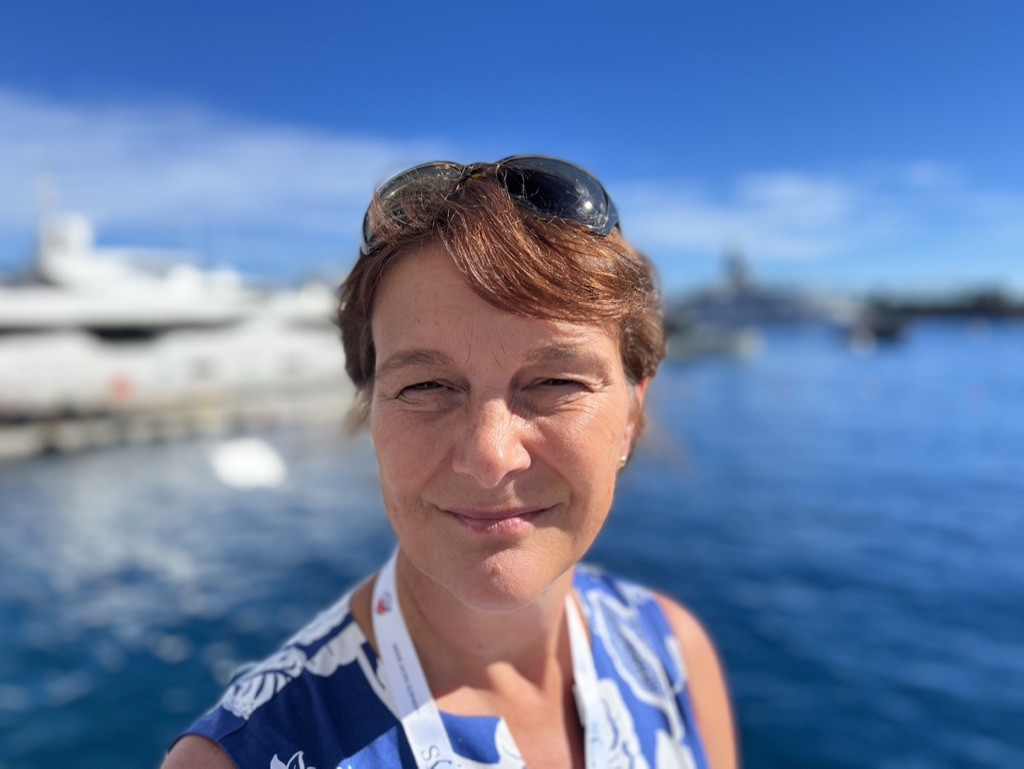
Tracey Santrian, BZ Maritime Leadership
“Management training is a whole different ball-game because it needs to be ongoing,” adds Chris. “Training time should be scheduled during periods of downtime, but with leave and maintenance requirements, it often gets overlooked. When a yacht charters for a million euros a week, convincing an owner of the necessity of training is challenging. As head of management, I frequently have this tough conversation, but I strongly advocate for it. We need to find flexibility in the system to ensure this training happens.”
Moreover, there’s a pressing need for dynamic leadership and teamwork during emergencies or sudden pressure increases, but it’s a sad fact that it often takes a disaster to create new rules, whether that’s the likes of the Titanic for SOLAS or whether it’s The Marchioness on the river Thames for the large yacht code. Those are the types of things that have to happen before the creation of new codes. However, it’s not the proactive approach the industry needs, but there’s an opportunity to make the change before something happens, and perhaps learn from the likes of the Royal Navy and its approach to investing in leadership first.
“Having been on board a Royal Navy ship that had a catastrophic fire that killed two crewmembers [a diesel generator exploded], I know how import-ant human capabilities are,” said Karl. “As is often the case with serious incidents at sea, the situation conspires against you and the SOPs don’t cover what is occurring, like emergency pumps becoming defective, rough sea conditions, no other ships nearby, etc. That’s where the human capabilities of the crew really come to the fore and the leadership of the captain is fully tested.”
The industry can often be lulled into a false sense of security with tangible crisis-aversion gadgets such as advanced firefighting systems. While these innovations are promising, the challenges faced by smaller yachts that may lack the resources to implement such systems could lead to catastrophes if the crew are not drilled and trained properly by senior management on board. “Human nature drives us to measure and quantify things, seeking clear cause-and-effect relationships,” says Tracey.
“We feel reassured by tangible solutions like fire-suppression systems and watertight doors– those practical measures we can see and check off a list. But the human capability element is different. It’s not so black and white; it’s complex and nuanced.”
“In the F1 circuit, pit crews execute tyre changes with precision, operating within split-second time-frames. Similarly, the yachting industry requires a level of professionalism, teamwork and leadership akin to this.”
It’s this behavioural nuance that becomes key to addressing a person’s leadership qualities. For example, when it comes to evaluating a captain’s technical performance it’s relatively straightforward. If they’ve made a mistake, you can identify areas for improvement, go through additional training, and then assess them with criteria. But assessing human capability is entirely different. It’s a gradual process, a slow burn, with results that aren’t as tangible. You can measure how well a captain can navigate, but it’s more difficult to assess their leadership skills.
As a leader, you need to adapt and respond accordingly, but you can’t learn that overnight or on a short course either. It requires years of experience, ongoing development and mentorship. This poses a significant challenge for the industry because leadership and human-capability development aren’t quick fixes. They require consistent effort and investment over time, not just a short training course.
Some captains have mentioned that they’ve taken the initiative to educate themselves on leadership by watching videos, reading books and even coaching themselves. But the industry needs to take a more pragmatic approach, especially considering that this level of leadership training needs to be implemented throughout a career and happen in tandem as crew progress from the deck to the bridge. So what does this actually look like in practice?
“Well, for a start, we need to ensure we’re addressing underperformance constructively, offering the necessary training and monitoring progress” says Chris. “As a management company, we must take a stand. We often see situations where a captain leaves, and there’s a quick suggestion to replace them with someone familiar.
“However, it’s essential to choose the right person for the job, not just someone who is well liked by brokers and managers. While relationships are important, it should never be to the detriment of crew and operations, so moving away from the old boy network is crucial. At Edmiston, we will adopt a more structured and formal approach to captain selection to ensure the owners of our managed yachts benefit from this method. Over time, this will lead to better operations and reduced turnover, ultimately lowering costs.”
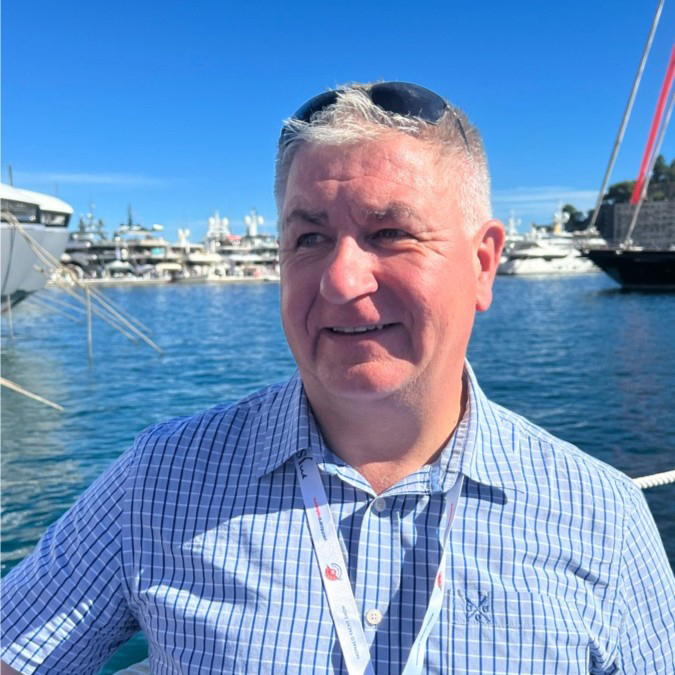
Karl Santrian, BZ Maritime Leadership
For the former Royal Navy Officers, owners need to understand that problems such as high turnover rates could be greatly reduced if there was better leadership on board. Yachts with increased turnover rates aren’t uncommon, and while owner-captain relationships are important, they shouldn’t be to the detriment of the rest of the crew. Equally, while it’s easy to say, ‘just fire them’, it’s more beneficial to re-educate and train the leaders we have. Insurers are beginning to carry out more stringent risk assessments, which could also help.
When you look at recruitment, uniform and on-boarding alongside the time to familiarise new crew and develop the team they are all easily financially quantifiable, and present a more compelling argument to owners, and the wider industry, on the significance of upskilling our leaders.
“It’s about re-education and also about pre-senting the industry that we have fantastic people, and this can be an amazing career path,” says Chris. “Educating from the bottom tier is great, but it fixes the problem ten years from now. We need solutions for five years from now and immediate fixes for those currently in positions of power.”
“Learning doesn’t just have to occur via formal training routes. Whilst formal training is essential, developing a learning culture and psychologically safe environment is essential,” explains Tracey. “When crewmembers have the right professional attributes, they can mentor or teach others on board – increasing knowledge and skill. Having a learning culture where crew feel safe to learn new skills and not be in fear of losing their job is immensely beneficial”.
And it’s here that we might just find the answer, and a near-term fix, to the problems faced on board. You can’t just send people on a training course; you need to invest in continuous professional development. A holistic approach where formal and informal training, alongside the development of on-board learning cultures, is essential. This is where the leadership sets the tone.
“Learning doesn’t just have to occur via formal training routes. Whilst formal training is essential, developing a learning culture and psychologically safe environment is essential,”
Establishing the ‘right tone’ can be challenging especially given the isolated nature of the superyacht industry, where captains spend most of their time taking owners and guests to remote locations as far away from other people as possible. But webinars like the PYA’s Leadership in Yachting, BZ Maritime Leadership’s Superyacht Leader Network (SLN) or Quay Crew’s Captain Community, addresses this isolation by providing a professional space for members to connect, share experiences, and discuss best practices.
The value of the peer-to-peer exchange in the webinars provides is immense, as scenarios are discussed and successes or improvements identified. The openness of the exchanges is also extremely beneficial and insightful for newly promoted captains or chief officers coming through the ranks.
“This interpersonal sharing and scenario-swapping is invaluable and constitutes leadership training without formal instruction. If more individuals in the industry were open about their experiences, including failures, it would create a culture of proactive learning,” says Chris. “Training people who are constantly under pressure and then on leave demands more of this peer-to-peer interaction, guided by professionals like Tracey and Karl. This approach helps everyone grow and handle situations more effectively.”
While peer-to-peer interactions might not neces-sarily provide the cure-all required to completely address leadership issues in the industry on its own, it does offer a worthy antidote to alleviate some of the more immediate symptoms. And this is the place to start – identify leadership training needs and holistically train the next generation to boost their human capability. In doing this the next generation will grow their leadership abilities alongside their technical skills.
If new crew entering the industry know how to ask the right questions, and if the generation above them – although perhaps not many years older, but more experienced in terms of training and on-board time – are open to being questioned and happy to provide answers, we can establish an internal audit system of leaders where accountability is inherent. And where there is an industry expectation that good leaders explain their actions and decisions by providing clear reasons.
So, it isn’t all doom and gloom. If you look at the industry and its leaders, the calibre of individuals
is incredibly high. “Imagine what the industry would look like with investment in human capabilities and a structured continuous professional development pathway,” concludes Tracey.
This article first appeared in The Superyacht Report – Captains Focus. To gain access to The Superyacht Group’s full suite of content, publications, events and services, click here to join The Superyacht Group Community and become one of our members.
Profile links
NEW: Sign up for SuperyachtNewsweek!
Get the latest weekly news, in-depth reports, intelligence, and strategic insights, delivered directly from The Superyacht Group's editors and market analysts.
Stay at the forefront of the superyacht industry with SuperyachtNewsweek
Click here to become part of The Superyacht Group community, and join us in our mission to make this industry accessible to all, and prosperous for the long-term. We are offering access to the superyacht industry’s most comprehensive and longstanding archive of business-critical information, as well as a comprehensive, real-time superyacht fleet database, for just £10 per month, because we are One Industry with One Mission. Sign up here.
Related news
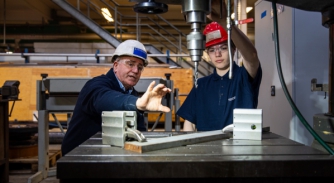
Building the next generation
Pendennis has been running an apprenticeship scheme for over 25 years, forming the bedrock of its experienced team of employees
Crew
.jpg)
The Superyacht Report - Captains Focus: Read It Now!
Issue 221: The Superyacht Report - Captains Focus is now available to read and download online
Crew
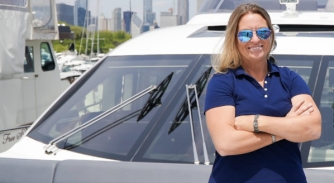
A sobering reality
As the industry looks to become more professionalised, Captain Kelly Gordon explains how dry boats can help solve the industry's drinking problem
Opinion

‘We must be proactive on crew welfare’
Charles Boyle, director of legal services, Nautilus International, says regulations compliance isn’t enough – crew welfare must take
Crew
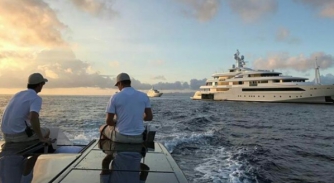
Are crew lacking leadership?
Despite some efforts being made to improve mental health on board, little has changed. Can senior leaders do more to truly turn the tide?
Crew
Related news
Building the next generation
9 months ago
The Superyacht Report - Captains Focus: Read It Now!
10 months ago
A sobering reality
11 months ago
‘We must be proactive on crew welfare’
1 year ago
Are crew lacking leadership?
1 year ago
NEW: Sign up for
SuperyachtNewsweek!
Get the latest weekly news, in-depth reports, intelligence, and strategic insights, delivered directly from The Superyacht Group's editors and market analysts.
Stay at the forefront of the superyacht industry with SuperyachtNewsweek



